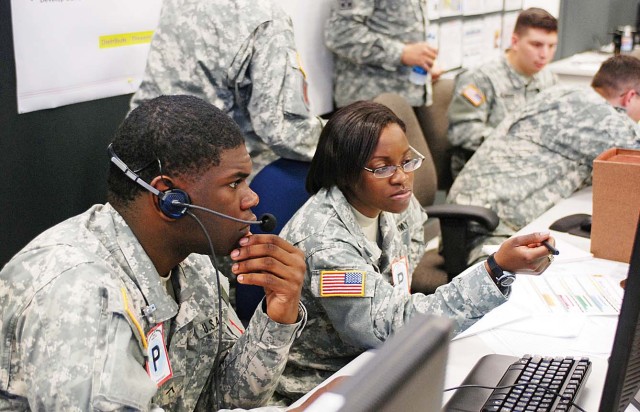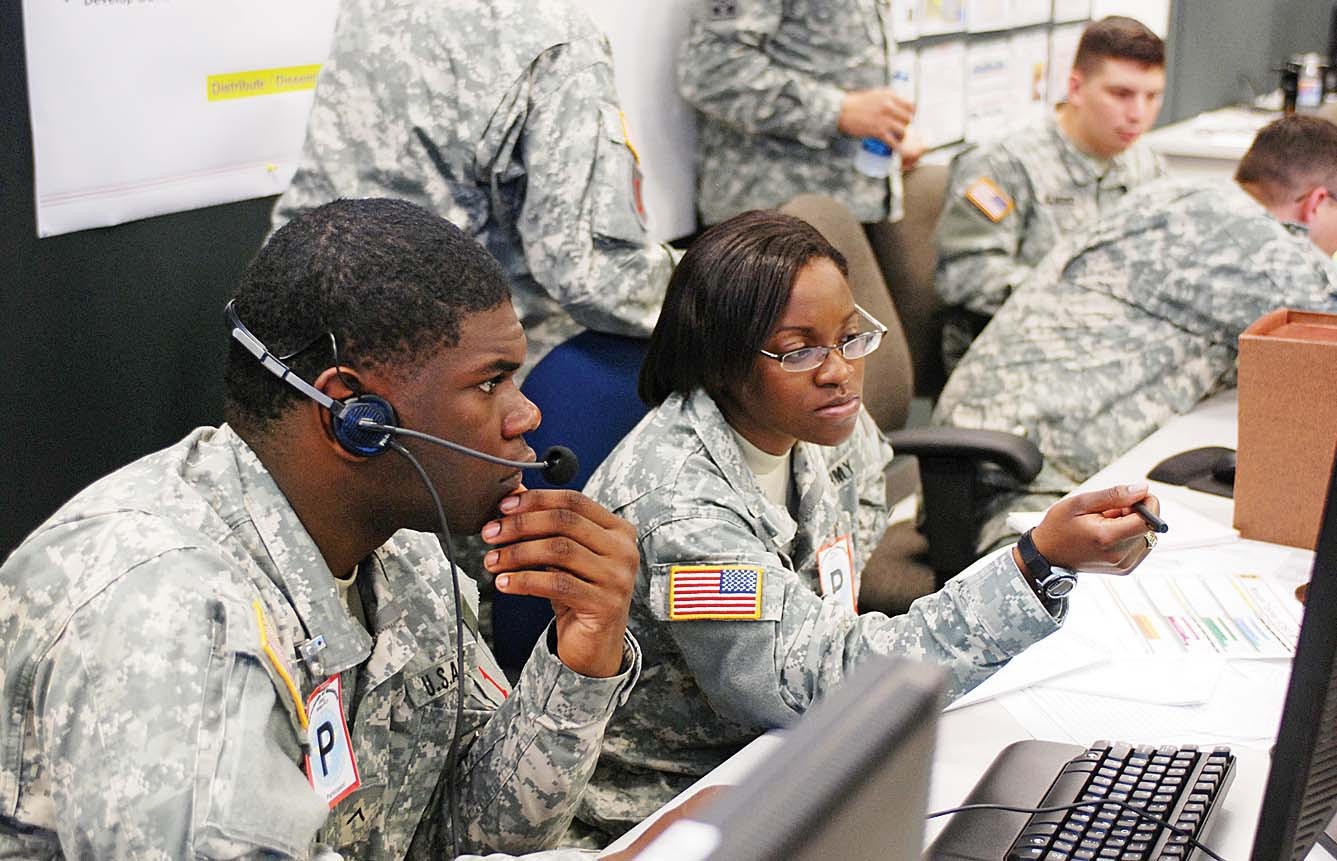FORT RUCKER, Ala. -- In just eight days, Combat Aviation Brigade, 1st Infantry Division Soldiers from Fort Riley, Kan., used advanced technology to simulate five years of deployments in Iraq.
At the home of Army Aviation, the CAB, known as the "Demon Brigade," refined their warfighting skills in a controlled learning environment during an Aviation training exercise Dec. 9-16.
"An ATX allows our brigade to validate our battle drills and reinforce our strengths and weaknesses," said Col. Frank Muth, CAB commander. "The best way to do that is away from Fort Riley where we can concentrate solely on training and building strong bonds within the unit."
In preparation for the ATX, each of the CAB's battalions individually conducted mission readiness exercises. Every battalion rehearsed their separate roles within the brigade, spanning from medical evacuation to downed aircraft recovery to attack and reconnaissance.
The CAB's battalions brought together lessons learned from their mission readiness exercises to train toward their universal mission of providing support for coalition ground forces.
In a simulated environment, the ATX provided training in every aspect of the CAB's mission, from aircraft operations to tactical control of the brigade's operations.
The ATX provided the best possible atmosphere for the Aviation brigade to train, said Muth.
"Fort Rucker has held an ATX 60 times," Muth said. "They've got top of the line equipment and most importantly the trainers and resources to input the most up-to-date information into that equipment."
Up-to-date information is critical since the battlefield is constantly changing. Information that existed six months ago from the Aviation battlefield is no longer relevant to current operations, he said.
To help provide the CAB with the most relevant and valuable information, five 1st Air Cavalry Brigade subject matter experts mentored CAB Soldiers during the ATX, offering insight on current operations in Iraq. The CAB is scheduled to replace the 1st ACB in Iraq.
"Our objective is to set up the CAB, 1st ID with the best, current information from Iraq to make their training as real as possible, while being on hand to answer questions they may have," said Maj. Dale Barbank, an AH-64 Apache pilot and plans officer from the 1st ACB. "Our presence also helps build connections with CAB personnel we'll interact with as they replace us in Iraq. That'll help make things smoother when the time comes."
In addition to the 1st ACB personnel, Soldiers from Fort Rucker and training assets from Fort Hood, Texas, served as observer-controllers, providing constructive criticism of the CAB's operations throughout the exercise.
"Doing an ATX here is basically like doing a virtual dry run of a deployment," said Master Sgt. Donald Skidds, director of simulation at the ATX facility. "It's an effective way to train because we can implement whatever scenarios we want to."
CAB pilots used 24 flight simulators to conduct dozens of daily operations. The technology in the simulators made the training as real as possible, said Skidds. Instead of monitoring a screen while they "fly," pilots used advanced helmet mount displays. The displays, mounted to a traditional flight helmet, projected imagery pilots would actually see in flight.
"In the simulator, the seat shakes, you can hear the rotors, the engine, and the helmet's display allows the pilots to turn their heads and feel as if they were actually flying," said Skidds. "After a few hours of flying, pilots feel as if they were actually conducting missions. It's very realistic."
Simulation did not end with the pilots, however. Soldiers of the 601st Aviation Support Battalion used desktop-based simulators to conduct convoy operations, including supply missions and downed aircraft recovery.
The convoy simulators were linked to the same system as the flight simulators, allowing the brigade's ground and aerial assets to operate on the same digital battlefield.
The ASB's participation in the ATX is a new addition to this type of training, said Lt. Col. James Erbach, the battalion's commander.
"An Aviation support battalion is fairly new to the Aviation community and in the past, ground missions haven't been replicated (in an exercise)," Erbach said. "Now that it is, it helps to develop the brigade's concept of our mission and the support we provide."
Monitoring the overall operations of the brigade's assets, Soldiers trained in several tactical operations centers. Using networked computer systems linked to the simulators and several other programs, Soldiers managed the movement of aircraft and closely monitored each incident.
"The Soldiers in the TOCs have their hands full," said Skidds. "In the eight days of training, we push through five years worth of scenarios. It's crazy, but it's good training."
Often controlling multiple missions at once, TOC personnel were trained on scenarios ranging from routine reconnaissance flights to air assaults. Through the training, Soldiers in the TOC and the brigade staff validated mission procedures, implemented changes in their existing systems and updated standard operating procedures.
"The ATX is designed to stress both brigade and battalion staff teams," Muth said. "By working together through each scenario, the staff is able to replicate the energy of actually being deployed."
Returning to Fort Riley, the CAB will continue to train in preparation for its upcoming deployment to Iraq. Taking information and assessments from the ATX, the CAB will strengthen its battle-drills and procedures, making changes and reinforcements as necessary.
"During the next deployment, we anticipate our brigade conducting distributed operations across Iraq in a multitude that has not previously been conducted," said Muth. "It's really an exciting time for Army Aviation and the 'Big Red One,' (1st ID) as we enter a new chapter in the Iraqi conflict."


Social Sharing